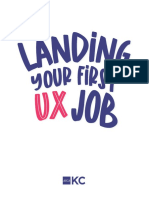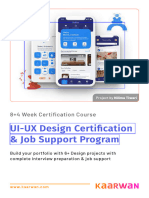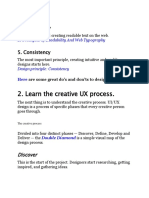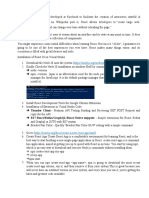0% found this document useful (0 votes)
29 views17 pagesAdvanced UX Design Course - Syllabus
The Intermediate & Advanced UX Course 2025 starts on April 9, 2025, and is designed for designers looking to enhance their UX skills over a 5-month period with 20 online sessions in Arabic. The syllabus covers intermediate topics like UX frameworks and user testing methods, followed by advanced topics such as psychology in UX design and accessibility. The course fee is 5000 EGP, with a deposit of 1000 EGP required to secure a spot.
Uploaded by
Tony KamalCopyright
© © All Rights Reserved
We take content rights seriously. If you suspect this is your content, claim it here.
Available Formats
Download as PDF, TXT or read online on Scribd
0% found this document useful (0 votes)
29 views17 pagesAdvanced UX Design Course - Syllabus
The Intermediate & Advanced UX Course 2025 starts on April 9, 2025, and is designed for designers looking to enhance their UX skills over a 5-month period with 20 online sessions in Arabic. The syllabus covers intermediate topics like UX frameworks and user testing methods, followed by advanced topics such as psychology in UX design and accessibility. The course fee is 5000 EGP, with a deposit of 1000 EGP required to secure a spot.
Uploaded by
Tony KamalCopyright
© © All Rights Reserved
We take content rights seriously. If you suspect this is your content, claim it here.
Available Formats
Download as PDF, TXT or read online on Scribd
/ 17
























































































